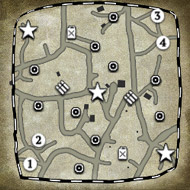I'm not sure how I feel about this: "No Longer can auto face".
I get the intent. They'll require some micro to be effective now. Then again, it becomes one of those unnecessary mechanics that make you feel like you're playing against the game. Kind of like the old USF ambulance.
It's not bad, just not intuitive I guess.
Livestreams
 |
|
|
68 | ||
 |
|
|
60 | ||
 |
|
|
31 | ||
 |
|
|
1 | ||
 |
|
|
259 |
Ladders Top 10
-
#Steam AliasWL%Streak
- 1.59682.879+10
- 2.43163.872+9
- 3.9533.742-2
- 4.14939.793+8
- 5.289162.641+7
- 6.14348.749-1
- 7.14565.690+13
- 8.18151.780+4
- 9.18678.705+1
- 10.814466.636+2
Replay highlight
VS
-
 cblanco ★
cblanco ★ -
 보드카 중대
보드카 중대
-
 VonManteuffel
VonManteuffel -
 Heartless Jäger
Heartless Jäger

Einhoven Country


Honor it
14
Download
1378
Board Info
246 users are online:
246 guests
5 posts in the last 24h
11 posts in the last week
39 posts in the last month
11 posts in the last week
39 posts in the last month
Registered members: 54013
Welcome our newest member, Newgioco
Most online: 2043 users on 29 Oct 2023, 01:04 AM
Welcome our newest member, Newgioco
Most online: 2043 users on 29 Oct 2023, 01:04 AM




 Strategos
Strategos




